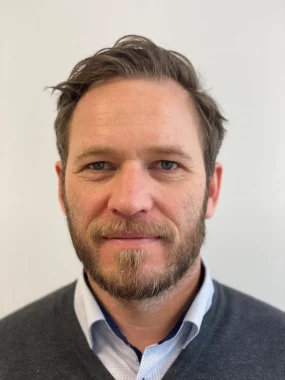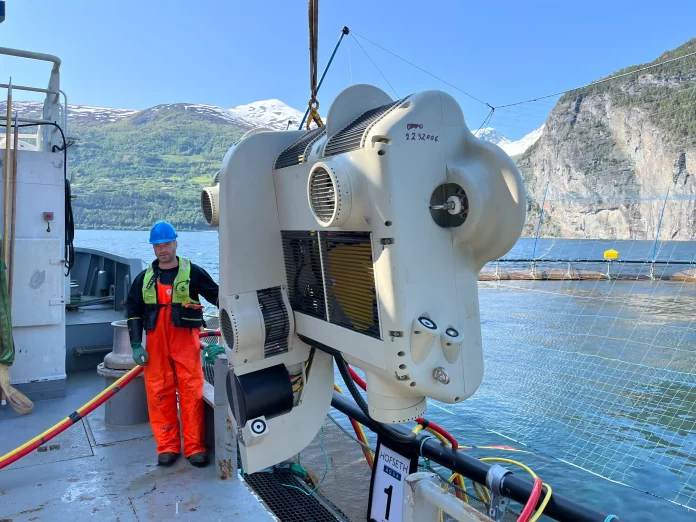Escaped farmed fish not only threaten the survival and genetic integrity of wild salmon populations but also can trigger heavy fines and sanctions for companies.
In 2022, an Icelandic salmon farming company was fined ISK 120 million ($850,000) following the escape of 81,564 salmon from a torn net.
The following year, Iceland’s veterinary authority warned that executives and managing directors of aquaculture license holders may face fines or imprisonment up to two years if farmed fish escape from a facility due to deliberate actions or carelessness.
But what can farmers actually do about it?
One company, Mainstay, best known for its net cleaning robot, the Mainstay Manta, is leveraging artificial intelligence to transform how aquaculture nets are maintained.
“Imagine spending your entire workday watching the same movie: an endless, monotonous expanse of mesh flowing towards you. It is your job to look for holes in the net. If you miss one, the consequences can be serious,” CEO Thore Standal told SalmonBusiness.
A single hole in these nets can lead to substantial financial penalties and environmental repercussions, he points out. In response to these challenges, Mainstay has developed an AI tool to improve the detection of net integrity issues.
Harnessing the capabilities of the Manta’s six digital cameras was a logical next step for Mainstay.
“We wanted to do our bit to help solve this problem,” says Standal. The AI technology is tasked with distinguishing between healthy mesh and potential damage such as holes, seaweed, old repairs, dead fish or other debris. This precision is critical as it reduces the likelihood of costly escapes and enhances net maintenance and monitoring .

The algorithm’s development was in collaboration with Chronos, a Norwegian company at the forefront of AI, known for its high-end solutions in AI, computer science, and big data. “Hole detection is no trivial matter, but we have a lot of experience with image and video analysis,” says Espen Remman, a partner and senior advisor at Chronos.
Mainstay’s AI system, known as Mainstay Eye, does more than detect holes. It assesses the overall condition of the net and the amount of fouling, which assists farming companies in optimizing cleaning frequencies and establishing better cage maintenance routines.
The system also collects a vast array of data during cleaning operations—such as water temperature, salinity, oxygen levels, and cleaning pressure—which is integrated into detailed reports and uploaded to the cloud.
Standal further explains, “The idea is to make all relevant information available to the farming companies. Data can be analysed in real time or stored for future use. In many cases, third-party companies perform net cleaning as a service. Being able to document how, when, and under which conditions cleaning took place may resolve some discussions between service providers and farming companies.”
In 2021, Mainstay reported an annual turnover of NOK 70 million ($6 million). The company employs around 20 people. It supplies cleaning equipment to the aquaculture industry worldwide, particularly in Norway, Scotland, Canada, and Chile, servicing approximately 100 active customers including major players such as Mowi, Frøygruppen, Cermaq, Bakkafrost, Cooke, and Scottish Seafarms.









